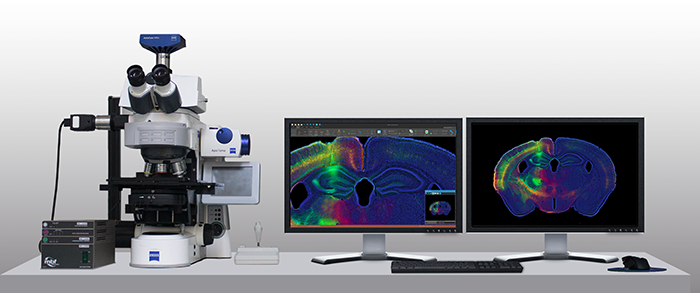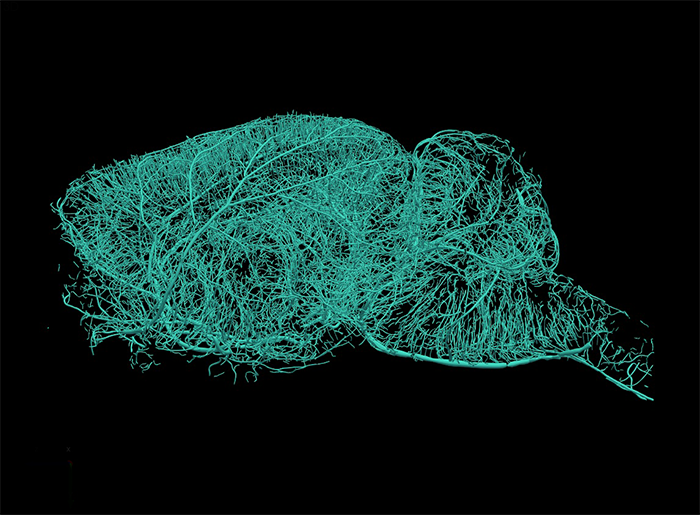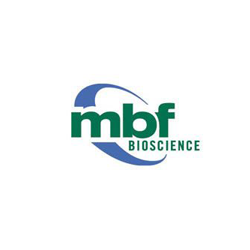 In the 1960s, neuroscientists did almost all image analysis entirely by hand. Microscope images of brain cells like neurons and dendrites could be compared only by eye and ruler. Edmund Glaser, a neuroscientist with an engineering background, knew there had to be a better way: the field would not be able to move forward without more robust analysis methods.
In the 1960s, neuroscientists did almost all image analysis entirely by hand. Microscope images of brain cells like neurons and dendrites could be compared only by eye and ruler. Edmund Glaser, a neuroscientist with an engineering background, knew there had to be a better way: the field would not be able to move forward without more robust analysis methods.
Using his technical expertise, he invented and patented a way to project a computer display into the view of a microscope. His son, Jack Glaser, was a computer science student at the University of Vermont at the time; Edmund recruited him to write software for his invention.
MBF Bioscience, founded in 1987, and its technology has come a long way from Edmund Glaser’s first invention. MBF Bioscience now sells products for quantitative image analysis used by neuroscience researchers, pharmaceutical and biotechnology companies, and medical students.
The company has been an active recipient of SBIR grants since 1985 and MBF Bioscience’s first commercial product was Neurolucida, a neuron tracing system.
The researchers had developed a new tissue preparation technique that “makes the brain transparent,” according to Glaser.
The system includes a computer-controlled microscope and Neurolucida software. Images taken with the microscope are analyzed by the computer using the software, and the program also provides a 3D reconstruction of the sample, with each individual neuron or dendrite identified.
In the 30 years since its commercialization, Neurolucida has evolved and improved. In neuroscience research papers, it is cited over ten times more than all other available neuron tracing programs combined. With the help of Neurolucida, researchers have published innovative studies on disorders such as schizophrenia and bipolar disorder.
“With the [SBIR] grant, we were able to finish Neurolucida and launch it,” Glaser says. “The product today is quite different than it was in in 1990. But getting the funding from the NIH was essential for us to commercialize.”
The latest Neurolucida version, Neurolucida 360, was developed with the help of a Lab-to-Marketplace SBIR grant from the National Institute of Mental Health, in collaboration with the Mount Sinai School of Medicine. Lab-to-Marketplace grants encourage the translation of biomedical or behavioral research technologies from academic laboratories to the commercial marketplace.

"The NIH SBIR program allowed us to partner with key academic institutions including Mount Sinai School of Medicine and the Rensselaer Polytechnic Institute, as well as leading microscopy companies like Zeiss, Leica, and Olympus to develop our technologies now selling to 1,500 labs located in 44 countries across the world," says Glaser.
An upcoming MBF Bioscience product, called ClearScope, is also being developed with researchers at Columbia University under a Lab-to-Marketplace SBIR grant from the National Institute of Mental Health. The researchers had developed a new tissue preparation technique that “makes the brain transparent,” according to Glaser. The combined team hopes that this new technology, once commercialized, can enable the development of novel treatment strategies for complex brain diseases.
“I think the SBIR program is a huge key to the success of American enterprise and commercial innovation,” Glaser says. “When I look at what our company has been able to accomplish with the SBIR support, it’s remarkable.”







